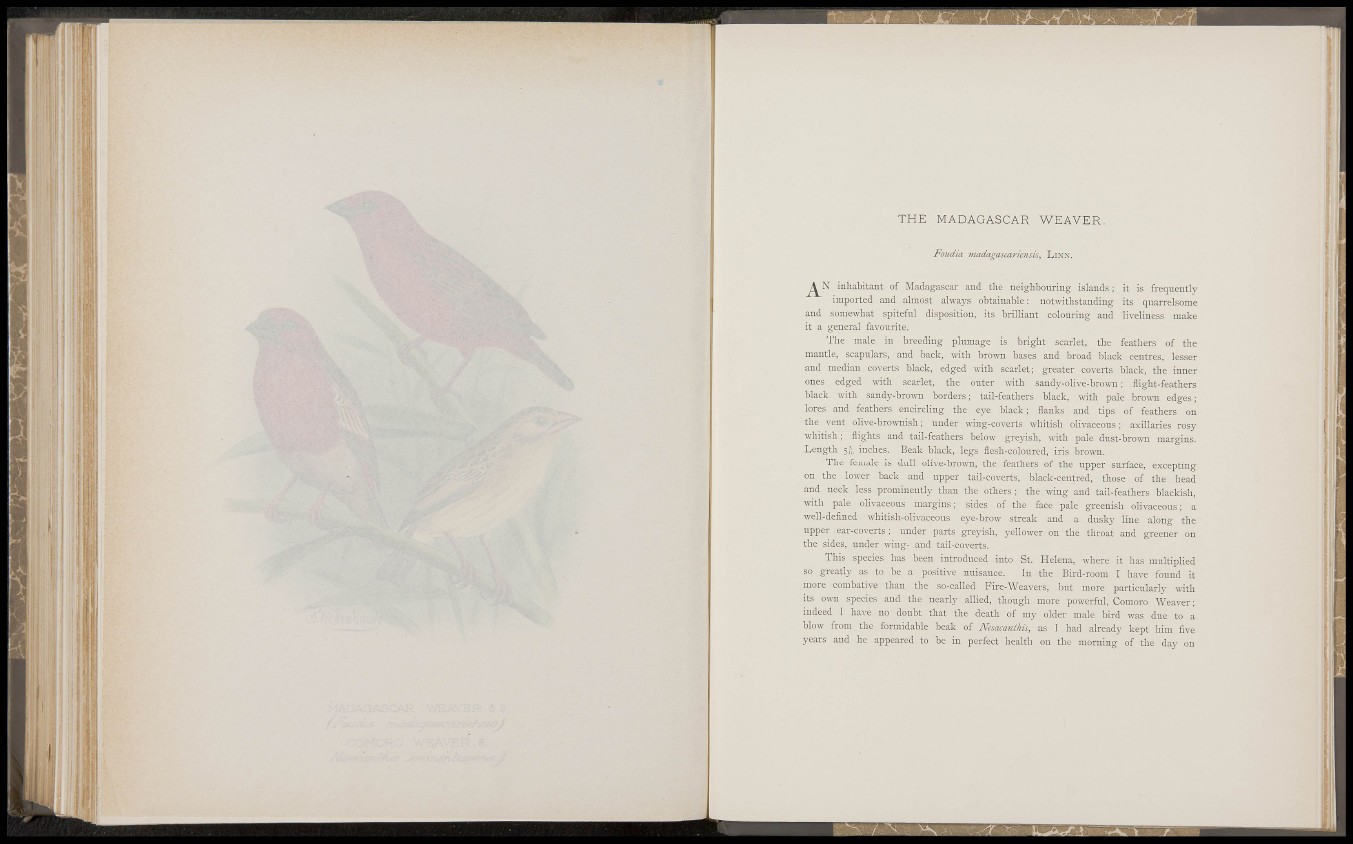
!
' I 'i
it.
i m
T H E MADAGASCAR WEAVER.
Foudia 1/iadagascariensis, LINN.
^ N inhabitant of Madagascar and tlie neighbouring islands ; it is frequently
imported and almost always obtainable: notwithstanding its quarrelsome
and somewhat spiteful disposition, its brilliant colouring and liveliness make
it a general favourite.
The male in breeding plumage is bright scarlet, the feathers of the
mantle, scapulars, and back, with brown bases and broad black centres, lesser
and median coverts black, edged with scarlet; greater coverts black, the inner
ones edged with scarlet, the outer with sandy-olive-brown ; flight-feathers
black with sandy-brown borders; tail-feathers black, mth pale brown edges;
lores and feathers encircling the eye black ; flanks and tips of feathers on
the vent olive-bro-wnish; under wing-coverts whitish olivaceous ; axillaries rosy
whitish ; flights and tail-feathers below greyish, with pale dust-brown margins.
Length inches. Beak black, legs flesh-coloured, iris brown.
The female is dull olive-brown, the feathers of the upper surface, excepting
on the lo^\'er back and upper tail-coverts, black-centred, those of the head
and neck less prominently than the others ; the wing and tail-feathers blackish,
with pale olivaceous margins; sides of the face pale greenish olivaceous; a
well-defined whitish-olivaceous eye-brow streak and a dusky line along the
upper ear-coverts ; under parts greyish, yellower on the throat and greener on
the sides, under wing- and tail-coverts.
This species has been introduced into St. Helena, where it has multiplied
so greatly as to be a positive nuisance. In the Bird-room I have found it
more combative than the so-called Fire-Weavers, but more particularly with
its own species and the nearly allied, though more powerful, Comoro Weaver;
indeed I have no doubt that the death of my older male bird was due to a
blow from the formidable beak of Nesacanthis, as I had already kept him five
years and he appeared to be in perfect health on the morning of the day on
i: